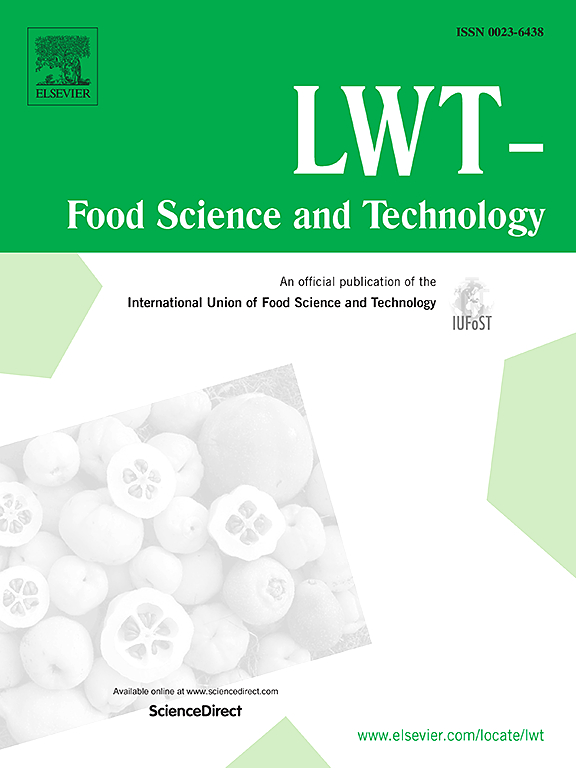Effects of steam explosion pretreatment at different severity factors on the structure, chemical composition, and digestive properties of Dendrobium officinale (Tiepishihu) polysaccharides
IF 6.6
1区 农林科学
Q1 FOOD SCIENCE & TECHNOLOGY
引用次数: 0
Abstract
The bioactive molecules of Dendrobium officinale, an edible medicinal plant native to China, comprise mainly polysaccharides, which exhibit diverse physiological activities. However, the rigid cell wall structure of D. officinale hinders their efficient release. Steam explosion (SE) is an effective pretreatment technology for disrupting the cell walls of raw materials. In this study, the effects of SE at severity factors (SF) of 3.50 and 3.91 on the yield of D. officinale polysaccharides were evaluated. Additionally, the structural features, chemical composition, and antioxidative activities of polysaccharides from SE-treated D. officinale (SEDOPs) before and after in vitro digestion were analyzed. Compared with the untreated group (DOP), the SE-treated samples exhibited enhanced polysaccharide release rates. Additionally, SEDOP3.50 was significantly purer and had a higher uronic acid content than that of DOP. SE treatment also reduced molecular weights of the polysaccharides. Mannose and glucose were identified as the predominant monosaccharides, with SE altering their molar ratios. Structurally, the SEDOPs developed porous architectures while their primary structures remained preserved. Their triple-helical conformations were disrupted following intestinal digestion. Furthermore, SE treatment enhanced their antioxidative capacities, with SEDOP3.50 consistently exhibiting the highest uronic acid content and strongest antioxidative activity throughout the digestion process.
不同程度蒸汽爆炸预处理对铁皮石斛多糖结构、化学成分及消化性能的影响
铁皮石斛是一种原产于中国的可食用药用植物,其生物活性分子主要由多糖组成,具有多种生理活性。然而,硬细胞壁结构阻碍了它们的有效释放。蒸汽爆破是一种有效的破坏原料细胞壁的预处理技术。本研究考察了SE在严重因子(SF)为3.50和3.91时对铁皮石斛多糖产率的影响。此外,对se处理的铁皮石斛多糖(SEDOPs)体外消化前后的结构特征、化学成分和抗氧化活性进行了分析。与未处理组(DOP)相比,se处理的样品多糖释放率提高。此外,SEDOP3.50的纯度和糖醛酸含量显著高于DOP。SE处理也降低了多糖的分子量。甘露糖和葡萄糖被确定为主要的单糖,SE改变了它们的摩尔比。在结构上,sedopp形成了多孔结构,但其原始结构仍保持不变。它们的三螺旋构象在肠道消化后被破坏。此外,SE处理增强了它们的抗氧化能力,SEDOP3.50在整个消化过程中始终表现出最高的醛酸含量和最强的抗氧化活性。
本文章由计算机程序翻译,如有差异,请以英文原文为准。
求助全文
约1分钟内获得全文
求助全文
来源期刊

LWT - Food Science and Technology
工程技术-食品科技
CiteScore
11.80
自引率
6.70%
发文量
1724
审稿时长
65 days
期刊介绍:
LWT - Food Science and Technology is an international journal that publishes innovative papers in the fields of food chemistry, biochemistry, microbiology, technology and nutrition. The work described should be innovative either in the approach or in the methods used. The significance of the results either for the science community or for the food industry must also be specified. Contributions written in English are welcomed in the form of review articles, short reviews, research papers, and research notes. Papers featuring animal trials and cell cultures are outside the scope of the journal and will not be considered for publication.
 求助内容:
求助内容: 应助结果提醒方式:
应助结果提醒方式:


